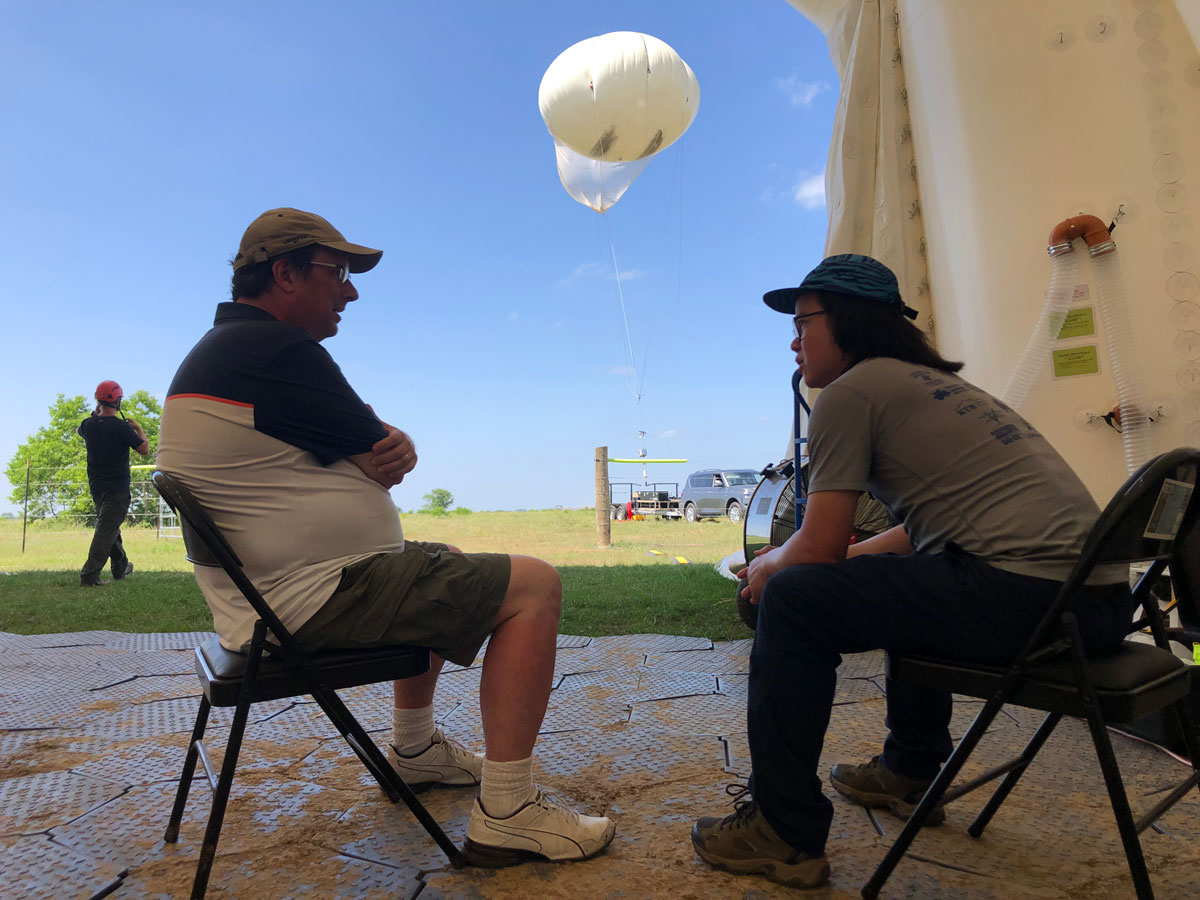Chongai Kuang: Up, Up, and Away in Search of Aerosol Data
Published: 29 August 2022
A Brookhaven National Laboratory atmospheric scientist, with stops in Texas and Alabama, continues his research into aerosol formation and growth
One June afternoon in 2022, on a patch of green pasture in rural Guy, Texas, atmospheric scientist Chongai Kuang looked up into a pale blue sky.
Nearby, a white tethered balloon the size of a sedan danced on a slim tether. It eased into the humid air, powered by a winch mounted on a flatbed trailer.
The balloon and winch are the main parts of an atmospheric science measurement strategy called tethered balloon systems (TBS).
Like dozens of other scientists over the course of a year, Kuang was in the Houston, Texas, area as part of a comprehensive, multi-agency campaign to study the origins of storms.
The TRacking Aerosol Convection interactions ExpeRiment (TRACER) will wrap up in September 2022. It’s conducted by the U.S. Department of Energy’s Atmospheric Radiation Measurement (ARM) user facility.

Kuang, a TRACER co-investigator from Brookhaven National Laboratory in New York, studies how atmospheric aerosols form and grow.
Data from Kuang’s TBS instruments will provide insights into boundary-layer controls on aerosol formation and growth, which include the influence of sea breezes on cloud formation.
In Guy, Kuang is also leading a four-month campaign on vertically resolved new particle formation. TRACER-VNATS investigates the formation of freshly nucleated particles as small as 1 nanometer in diameter.
Kuang’s natural laboratory will soon include an observatory in the interior of the stormy Southeastern United States.
He leads a site science team overseeing the 2023 deployment of the third ARM Mobile Facility in Alabama’s Bankhead National Forest.
During this anticipated five-year mission in the Southeast, the mobile facility’s instruments will record a broad array of data, including biogenic emissions, land-atmosphere coupling, and how regional clouds transition from shallow to convective.
Learn about Kuang and his work in this scientist profile on the Atmospheric System Research (ASR) website.
Keep up with the Atmospheric Observer
Updates on ARM news, events, and opportunities delivered to your inbox
ARM User Profile
ARM welcomes users from all institutions and nations. A free ARM user account is needed to access ARM data.


















